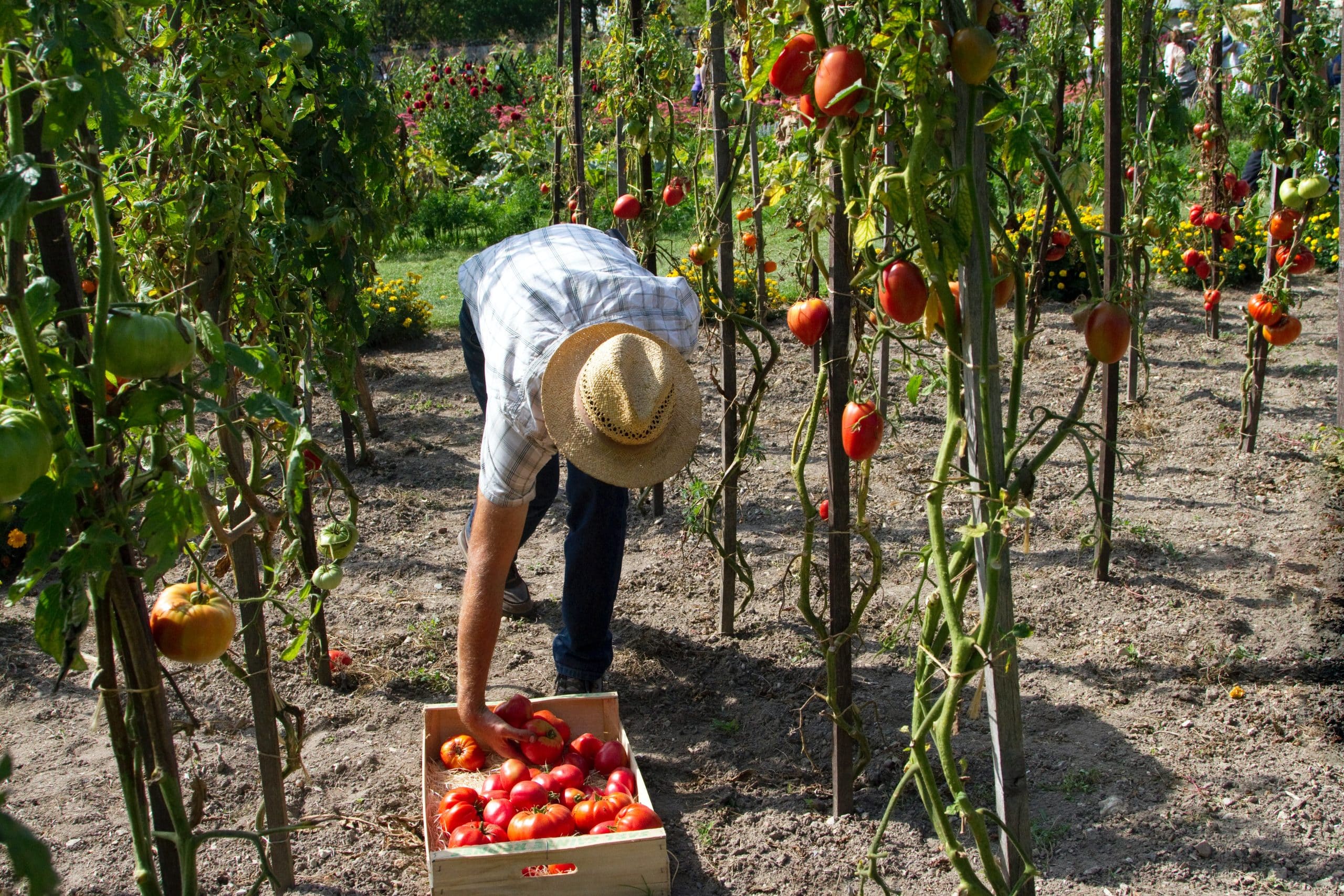
Edible landscaping: merging beauty with nutrition
Landscaping has been traditionally viewed as a way to enhance the aesthetic appeal of outdoor spaces. However, the concept of edible landscaping has been gaining popularity recently, bringing a new dimension to this old practice. This unique approach to landscape design allows you to grow food in your garden while maintaining its aesthetic appeal.
The Concept of Edible Landscaping
Edible landscaping is a practice that combines the benefits of traditional landscaping with the rewards of vegetable gardening. It’s a sustainable method of growing food in your own backyard, without compromising on beauty and aesthetics. The idea is to plant edible plants in a manner that is both functional and attractive.
Avez-vous vu cela : What are the key elements of coastal home design?
In edible landscaping, fruits, vegetables, herbs, and other edible plants are incorporated into landscapes. For example, you can replace ornamental flowers with flowering herbs or use fruit-bearing trees instead of traditional shade trees. You can also use vegetables for borders and ground cover. It’s all about making the most of your garden space while creating a beautiful, edible haven.
Benefits of Edible Landscaping
Edible landscaping offers numerous benefits, both practical and aesthetic. It’s a method that allows you to enjoy the fruits of your labor in a literal sense, providing fresh, organic produce that you’ve grown yourself.
Avez-vous vu cela : Minimalist kitchen design: simplifying your culinary space
One of the key benefits of edible landscaping is that it promotes self-sufficiency. You grow your own food, which not only saves you money on grocery bills but also ensures that you are consuming fresh and healthy produce. This practice also encourages a healthier lifestyle by promoting outdoor activities and physical work.
Another advantage is that edible landscaping can make your garden more attractive. Edible plants come in a variety of colors, textures, and shapes, offering a visual feast that changes with the seasons. The vibrant colors of vegetables, the lush greenery of herbs, and the blossoms of fruit trees can create a beautiful, dynamic landscape that brings life to your outdoor spaces.
Choosing the Right Plants for Edible Landscaping
Choosing the right plants for your edible landscape is crucial for achieving a balance between appearance and functionality. You need to consider factors like the climate and soil conditions in your area, the available space, and your personal preferences regarding what you want to grow and eat.
Vegetables can be a great choice for edible landscaping as they are easy to grow and can add a splash of color to your garden. Leafy greens like lettuce and spinach can serve as ground cover, while taller plants like tomatoes and beans can provide structure.
Herbs are another great option. They are usually small, easy to grow, and often have beautiful flowers. Plus, they can be easily incorporated into your cooking.
Fruit trees might require more space and care, but they can serve as stunning centerpieces in your landscape and provide plenty of delicious fruit.
Designing Your Edible Landscape
The design aspect is what sets edible landscaping apart from regular vegetable gardening. It’s not just about planting food; it’s about doing it in a way that is visually pleasing.
First, consider the layout. Think about where you want to place your plants in terms of height, color, and seasonality. Taller plants should go in the back, while shorter ones can be placed in the front. Group plants together based on their colors or the times of the year they blossom for a co-ordinated look.
Second, focus on diversity. Incorporate a wide range of plants to ensure variety in taste, color, and texture. This will make your garden more interesting and visually appealing.
Lastly, consider the practical aspects. Make sure all plants are easily accessible for care and harvest. Also, take into account the plants’ needs in terms of sunlight and water.
Maintaining Your Edible Landscape
Maintaining an edible landscape doesn’t have to be a daunting task. With some care and attention, you can ensure your garden stays healthy and attractive.
Regular watering and feeding are crucial for the health of your plants. Remember to water deeply but less frequently to encourage the growth of deep roots, which can help your plants withstand dry conditions better. Compost or organic fertilizers can provide your plants with the nutrients they need to thrive.
Pest control is another important aspect. Opt for organic methods like using beneficial insects, companion planting, and natural sprays to keep pests at bay.
Pruning and harvesting are also essential tasks. Regular harvesting encourages further production, while pruning keeps your plants in shape and promotes better growth.
In essence, edible landscaping is a wonderful way to make your garden beautiful, functional, and sustainable. It’s a method of growing food that nurtures not just your body, but also your soul.
Incorporating Edible Flowers and Attracting Wildlife
Incorporating edible flowers into your landscape design can bring additional color and vibrancy to your edible landscapes. Edible flowers such as nasturtiums, marigolds, and violets not only add aesthetic appeal, but also serve as culinary delights. These flowers can be used in salads, teas, and other recipes, providing an exotic twist to your meals.
Aside from their culinary uses, edible flowers can also play a significant role in attracting beneficial wildlife to your green spaces. Certain flowers can attract pollinators like bees and butterflies, which can help in the pollination of your plants, leading to a more productive garden.
Another way to attract beneficial wildlife is by incorporating specific plants and features that cater to their needs. For instance, bird-baths or bird-feeders can attract a variety of birds, some of which may help in pest control by feeding on insects. Similarly, plants with certain kinds of flowers or fruits can attract beneficial insects and other wildlife.
When planning your edible landscape, consider the local wildlife and think of ways to make your garden more friendly and appealing to them. Remember, a garden teeming with life is not only a delight to watch but also plays a crucial role in maintaining a healthy and balanced ecosystem.
Planning Ahead: Edible Landscaping for Every Season
Edible landscapes can also be designed to provide fresh produce all year round. By choosing plants that bear fruits or vegetables at different times of the year, you can ensure a continuous supply of fresh and organic food.
For instance, some fruits trees like apple and pear varieties bear fruit from late summer to early fall, while others like citrus trees produce in the colder months. Similarly, some vegetables and herbs are cool-season crops that thrive in the spring (March-April) and fall (September-October), while others prefer the warmer summer months (June-July).
By incorporating a variety of these plants into your design, you can have something fresh and edible in your garden at any given time of the year. This can be a rewarding experience, knowing that your garden can provide you with fresh food even in the coldest February or the hottest August.
Remember, edible gardening is not just a hobby, but a lifestyle. It requires planning, effort, and a desire to live sustainably. With edible landscaping, you have the opportunity to create a space that is not only visually pleasing, but also nourishing and beneficial to the environment.
Conclusion: The Future of Landscaping Lies in Its Past
As we look towards the future of landscaping designs, it’s clear that the philosophy behind edible landscaping – combining beauty with utility, creating spaces that nourish both the body and the spirit – is likely to become increasingly relevant.
In our fast-paced, increasingly urbanised world, the idea of growing food in our front yard or balcony is both a throwback to our agricultural past and a forward-thinking solution to modern challenges. Edible landscaping is an innovative approach to address issues like food security, sustainability, and health. It bridges the gap between aesthetic and functionality, and redefines our relationship with our living spaces.
We can create a future where our homes are not just places to live, but spaces to grow and thrive. Where every March and February are eagerly anticipated for the new growth they bring, and every April and June are celebrated for the bounty they provide. With edible landscaping, we can transform our gardens, our diets and our lives – one plant at a time.
Remember, every plant in your edible landscape tells a story – of the seasons, of nature’s bounty, and of the nurturing care you put into it. Start writing your story today, and make your green spaces a testament to the beauty and bounty of nature.
